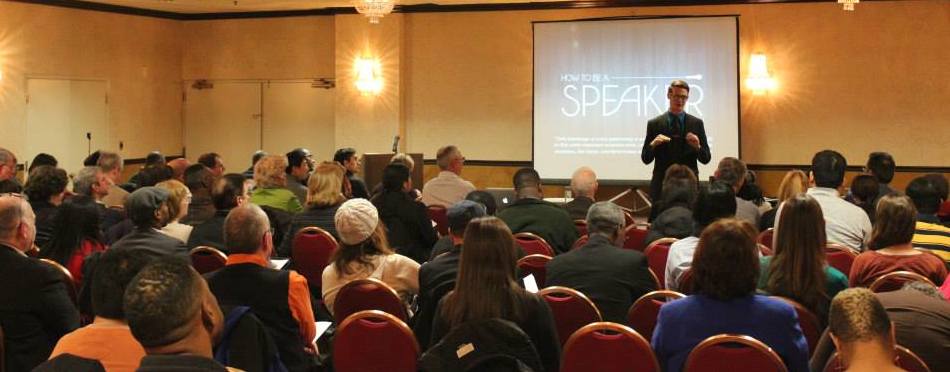Here are three things you need to take into consideration the next time you speak on stage:
Avoid stepping backwards when trying to make a point: Think of the stage being divided into two parts. Draw a line in the middle of the stage parallel to the front row; call it the front and the back. Every time you step toward the back it indicates three things to the audience; A negative view point, moving them into the past, or indicating you are uncomfortable. If someone tries to kiss you–and you’re not interested–what is your natural reaction? You move backwards. It’s the same when you speak. If you move backwards while trying to make a positive point, your body and its actions do not align with your words. Step forward to make a powerful point and to show the audience you are not nervous.
Avoid being too energetic at the start of your speech: I often see this when speakers try to get their audience pumped at the beginning of a meeting. Some of their listeners are just not into it. They lose them for the entire presentation or speech. I have three levels of energy when I am on stage: Low, medium and high. I start with medium energy to “test the waters” and see which way I want to take the audience. Beginning with too high or too low an energy level risks your audience tuning out your entire presentation. Start out with medium energy.
Avoid making assumptions about the audience: Please don’t say things like “I know what you are thinking” or “I bet you like/don’t like XYZ.” Unless you are 100% sure of what your audience does or doesn’t like, don’t say it! Never make assumptions about your audience. No matter how good you are, you do not know what everyone is thinking! Instead, say things like “What I was thinking after this was” or “I know not everyone might like XYZ.”
Avoid these common mistakes aspiring speakers make the next time you get in front of a group of people! As always…
Dream BIG,
Ryan



Great tips. Thank you Ryan.
Another excellent. Like so many others good advice bassed in well explained principles. I will conciously work on the energy level strategy for each presentation more.
ONE FLAW: I am trying to figure out when I was not interested in being kissed! 😉
following comments
Be dramatic! Stepping back can be a good way to emphasize a point, if planned and done intentionally. It catches the audiences attention. It’s like the pause; they will want to know what comes next! Drama is a key tool, don’t avoid it.
Let me add this one: NEVER, NEVER, NEVER EVER, turn to look at the screen! The message is two fold; the first is you forgot what you had on your slide, the second is that instead of having your audience leave you, you have left them. It will take you a while to get them back.
Chester Franklin
Speaker, Trainer, Facilitator
Franklin Training Systems